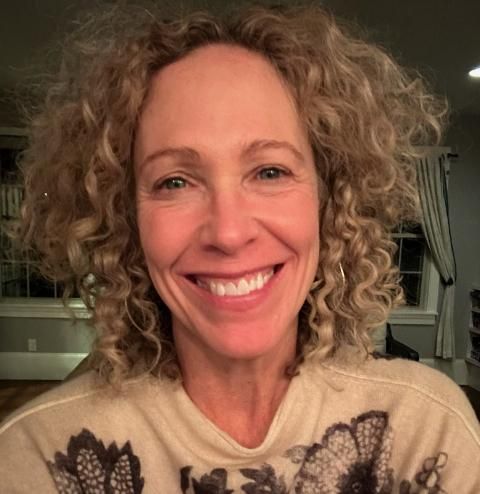Many people who take GLP-1 medications for weight loss also work with their healthcare provider or dietitian to set daily macronutrient and micronutrient goals. Tracking these essential nutrients and vitamins helps ensure your diet remains balanced while you’re on the medication.
Read on to find out more about macros and micros, why they matter if you’re on a GLP-1, and how to set your intake goals to support your nutrition needs.
Macros and Micros Explained
The U.S. Department of Agriculture defines macronutrients as “types of foods that are needed in large quantities in the diet.” This includes the big three building blocks of nutrition — carbohydrates, fats, and protein — plus fiber and water. A person who counts macros will consume specific percentages of their daily calories in each of these areas.
Micronutrients, on the other hand, are minuscule nutrients such as vitamins and minerals, says Sarah Keegan, RDN, CDCES, at the University of Nebraska Medical Center in Lincoln.“Setting micronutrient goals is less necessary,” notes Keegan. Usually, if people eat a variety of all food groups, they will meet all micronutrient needs, but your provider or dietitian may recommend a generic multivitamin.
Why You Should Track Macros on a GLP-1 — and How to Set Your Goal
People taking GLP-1s eat significantly less food than they normally would each day, says Keegan. That’s when tracking macros becomes helpful.
“Setting macronutrient goals and counting macros can help people continue to meet their baseline macro needs — especially in protein, which is necessary to minimize loss of lean body mass or muscle mass,” says Keegan.
As a first step toward setting your macro goals, it’s a good idea to talk with your primary care physician or a registered dietitian, suggests Beth Czerwony, RD, at the Cleveland Clinic’s Digestive Disease & Surgery Institute in Ohio. Because they know your health history and situation, they can start you off in the right direction, she says.
Your age, sex, current weight, goal weight, height, and activity level are all factors in your macro goal, adds Keegan.
Macro goals can vary, but Keegan suggests a person aiming to lose weight should aim for about 1 gram of protein per kilogram of body weight. If a person weighs 180 pounds, that’s about 81 kilograms, so their goal would be to eat at least 81 grams of protein per day. (For people looking to maintain their current weight, USDA dietary guidelines are for approximately 0.8 grams of protein per kilogram of body weight.)
How to Make Macro Tracking Easier
Apps can provide a guideline for your macro needs, says Keegan. “Although it won’t be individualized like you would get with an RDN, it can be a great starting place,” she says. Checking in with an RD or your doctor — especially if you have a medical condition — is still a good idea, she adds.
If you want to use an app, Lose It! allows you to input the name and amount of the foods you consume at each meal and snack. Next, it calculates your intake of carbohydrates, fats, protein, and micronutrients.
In general, if counting macros begins to feel like too much of a chore or becomes a source of stress or anxiety, talk with your RD or PCP about ways to lighten the burden. One option could be keeping track of macros for three days. For example, you could track on two “usual days” such as a weekday where you follow a routine, and then one “off day” such as a Saturday or Sunday, instead of all seven, says Czerwony. Keep in mind that it will be more helpful for you — and your PCP or RD — to get an accurate account of a few typical days than an inaccurate or incomplete record of all your days, she adds.
If you find that macro counting isn’t a great fit for you, consider following a consistent, healthy eating pattern instead. “A simple approach might be to eat food from all five food groups every day, which includes fruit, vegetables, grains, dairy or dairy substitutes, and protein or fish/meat/meat substitutes. Aim to eat at least two food groups at breakfast and any snacks throughout the day,” says Keegan — for example, dairy and whole grain, or fruit and dairy.
“Aim to eat at least three food groups at two other meals during the day, such as vegetables, protein, and grains. When you’re able, choose grains that are higher in fiber and lean or low-fat dairy/protein foods,” she says.
Counting Macros Can Ensure You Meet Your Nutritional Needs While Losing Weight
“Once you set your goal, tracking macro intake — especially when beginning any type of anti-obesity medication — will give you and your RD or provider an idea of how you’re doing,” says Czerwony. The information you enter in your app or food diary can be used to optimize your macro goals and help you and your provider identify areas where your nutrition may be falling short of what your body needs, she says.
If your provider is concerned that you have nutritional deficiencies, they may recommend a blood test to find out your levels of essential vitamins and nutrients.
And remember, healthy weight loss isn’t just about what you eat. Regular physical activity is recommended for everyone, including people taking a GLP-1, says Keegan. “In addition to eating enough protein, resistance training or strength training two to three times per week is very important to minimize muscle loss while losing weight,” she adds.
Editorial Sources and Fact-Checking
- Avery A et al. Setting Targets Leads to Greater Long-Term Weight Losses and ‘Unrealistic’ Targets Increase the Effect in a Large Community-Based Commercial Weight Management Group. Journal of Human Nutrition and Dietetics. June 14, 2016.
- Macronutrients. U.S. Department of Agriculture.
- Dietary Guidelines for Americans, 2020-2025. 9th Edition. U.S. Department of Agriculture and U.S. Department of Health and Human Services. December 2020.

